Chapter: 9th Science : Light
Concave Mirror
Concave Mirror
1. Ray diagrams for the formation of images
We shall now find the position, size and nature of
image by drawing the ray diagram for a small linear object placed on the
principal axis of a concave mirror at different positions.
Case–I: When the
object is far away (at in nity), the
rays of light reaching the concave mirror are parallel to each other (Figure
10).
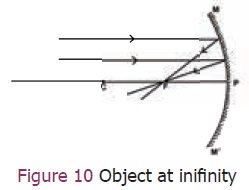
Position
of the Image: e image is at the principal focus F.
Nature of
the Image: It is (i) real, (ii) inverted and (iii) highly diminished in size.
Case–II: When the
object is beyond the centre of
curvature (Figure 11).
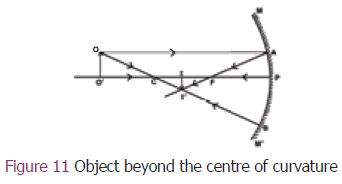
Position
of the image: Between the
principal focus F and centre of curvature C.
Nature of
the image: Real, inverted and smaller
than object.
Case –
III: When
the object is at the centre of
curvature (Figure 12).
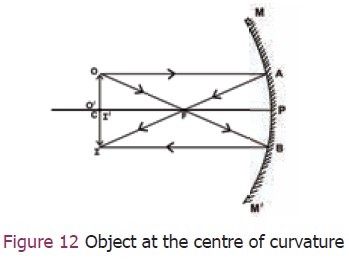
Position
of the image: The image is at the centre of curvature itself.
Nature of
the image: It is (i) Real, inverted and iii) same size as the object
Case –
IV: When the
object is in between the centre of
curvature C and principal focus F (Figure 13).
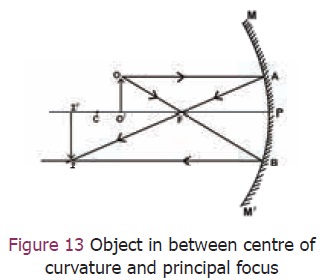
Position
of the image: The image is
beyond C
Nature of
the image: It is
i)Real ii) inverted and iii)
magnified.
Case – V: When
the object is at the principal focus
F (Figure 14).
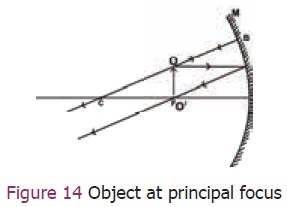
Position
of the image: Theoretically, the image is at infinity.
Nature of
the image: No image can be
captured on a screen nor any virtual image can be seen.
Case –
VI: When the
object is in between the focus F and
the pole P (Figure 15).
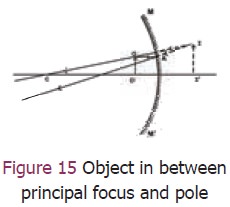
Position
of the image: e image is behind the mirror.
Nature of
the image: It is virtual,erect and magnified.
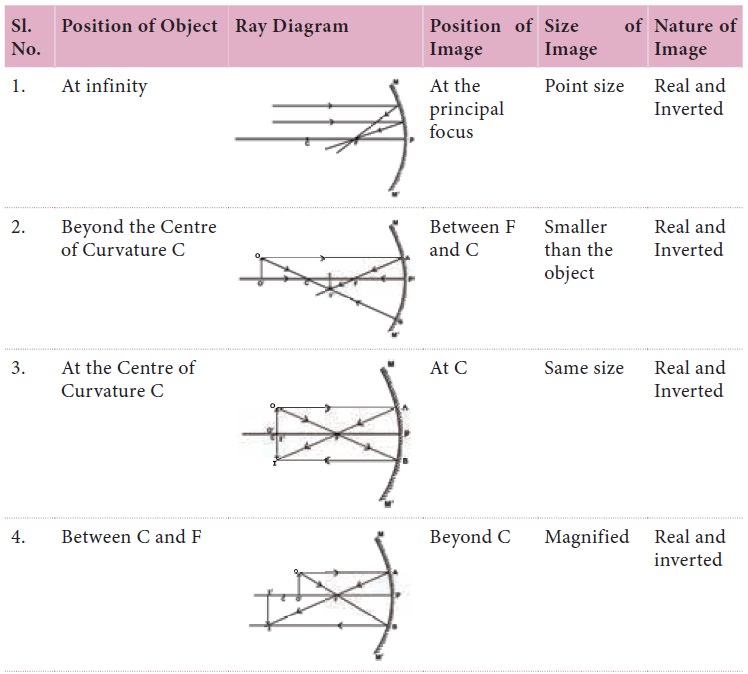
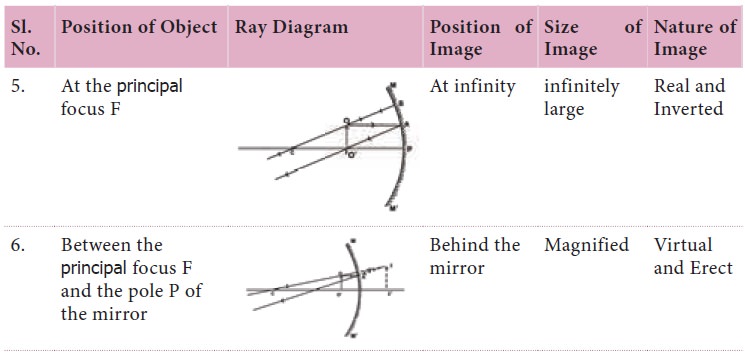
2. Sign convention for measurement of distances
We follow a set of sign conventions called the
cartesian sign convention. In this convention the pole (P) of the mirror is
taken as the origin. The principal axis is taken as the x axis of the
coordinate system (Figure 16).
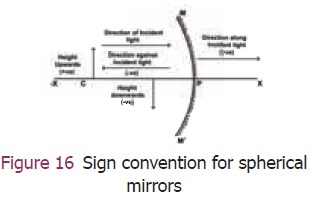
·
The object is always placed on the left side of the mirror.
·
All distances are measured from the pole of the mirror.
·
Distances measured in the direction of incident light are taken as positive and those measured in the
opposite direction are taken as negative.
·
All distances measured perpendicular to and above the principal axis are considered to be positive.
·
All distances measured perpendicular to and below the principal axis are considered to be negative.
3. Mirror equation
The expression relating the distance of the object u, distance of image v and focal length f of a spherical mirror is called the mirror equation. It is given
as:


4. Linear magnification (m)
Magnification produced by a spherical mirror gives
the how many times the image of an object is magnified with respect to the
object size.
It can be defined as the ratio of the height of the
image (hi) to the height
of the object (ho).

The magnification can be related to object distance
(u) and the image distance (v)

Note: A negative sign in the value of magni cation
indicates that the image is real. A positive sign in the value of magni cation
indicates that the virtual image.
Sample Problem 1
Find the size, nature and position of image formed
when an object of size 1 cm is placed at a distance of 15 cm from a concave
mirror of focal length 10 cm.
1. Position of image
Object distance u = 15
cm (to the left of mirror)
Image distance v =?
Focal length f = 10 cm (concave mirror)
Using mirror formula
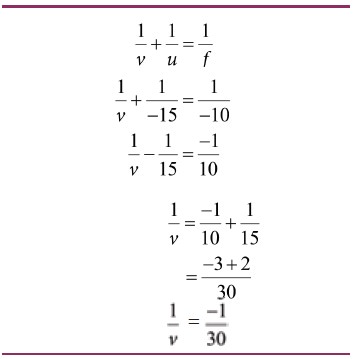
Image distance v = 30cm (negative sign indicates
that the image is on the left side of the mirror)
Position of image is 30 cm in front of the mirror
2. Nature of image: Since the image is in front of
the mirror it is real and inverted.
3. Size of image: To find the size of the image, we
have to calculate the magnification.
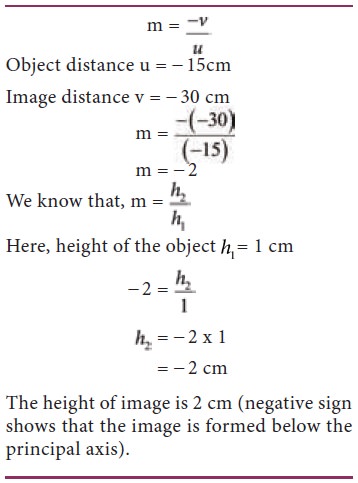
The height of image is 2 cm (negative sign shows
that the image is formed below the principal axis).
Sample Problem 2
An object 2 cm high is placed at a distance of 16
cm from a concave mirror which produces a real image 3 cm high. Find the
position of the image.
Calculation of position of image
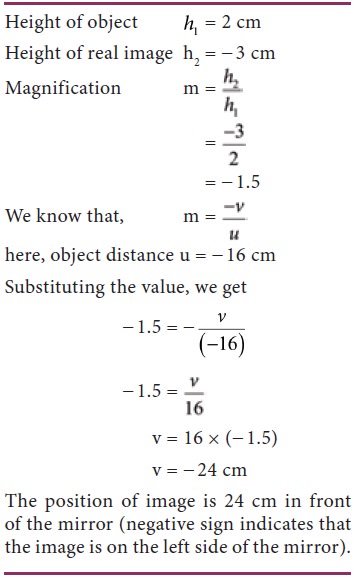
5. Uses can cave mirror
As a
dentist’s head mirror: You would have
seen a circular mirror attached to a band tied to the forehead of the
dentist/ENT specialist. A parallel beam of light is made to fall on the concave
mirror;this mirror focuses the light beam on a small area of the body (such as
teeth, throat etc.).

As a
make-up mirror: When a concave
mirror is held near the face (between the pole and principal focus of
the mirror), an upright and magnified image is seen. Here, our face will be
seen magnified.
Other
applications: Concave mirrors are also used as reflectors in torches, head lights in vehicles and
search lights to get powerful beams of light. Concave reflectors are also used
in room heaters. Large concave mirrors are used in solar heaters.

Related Topics